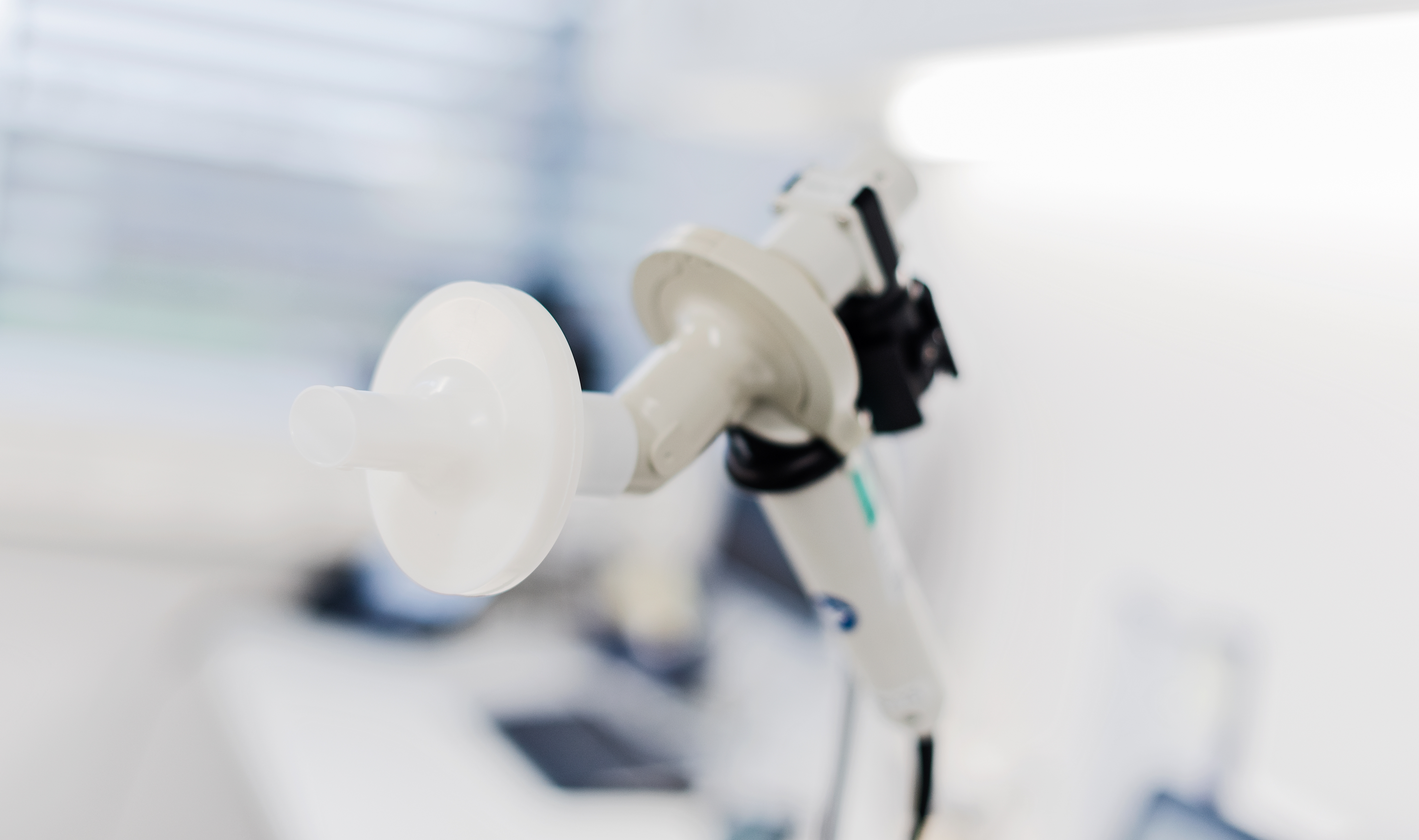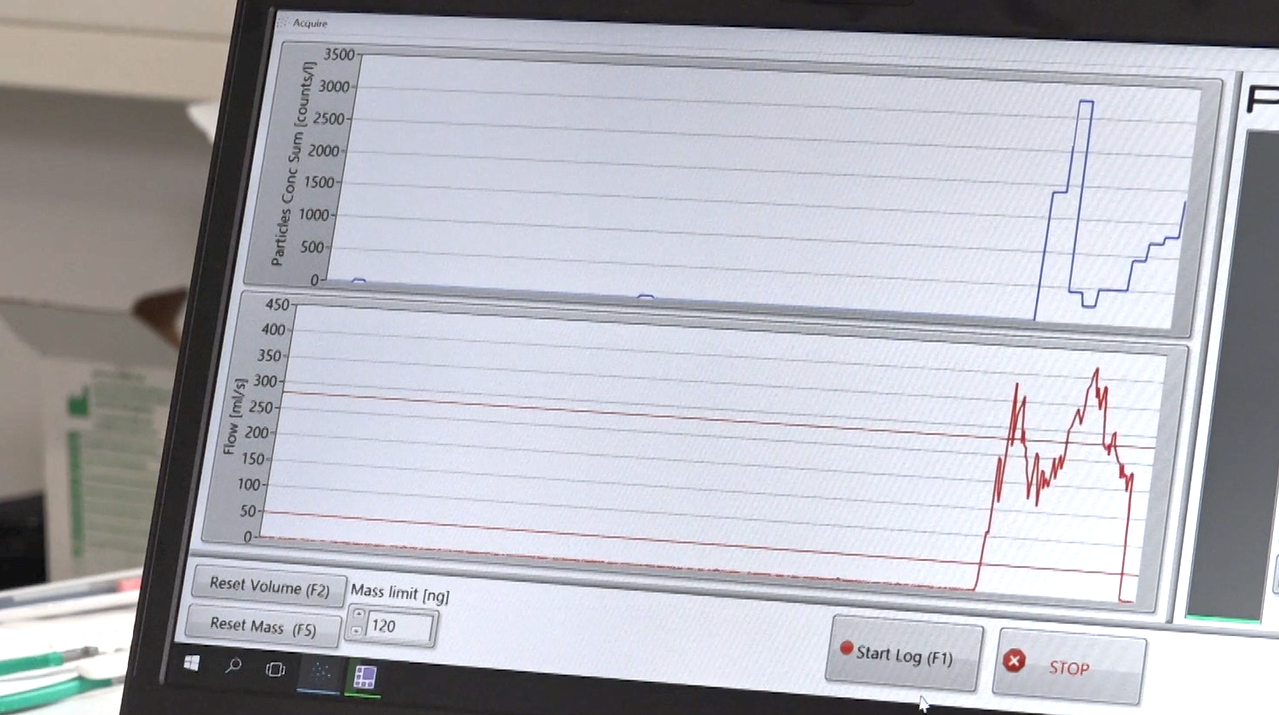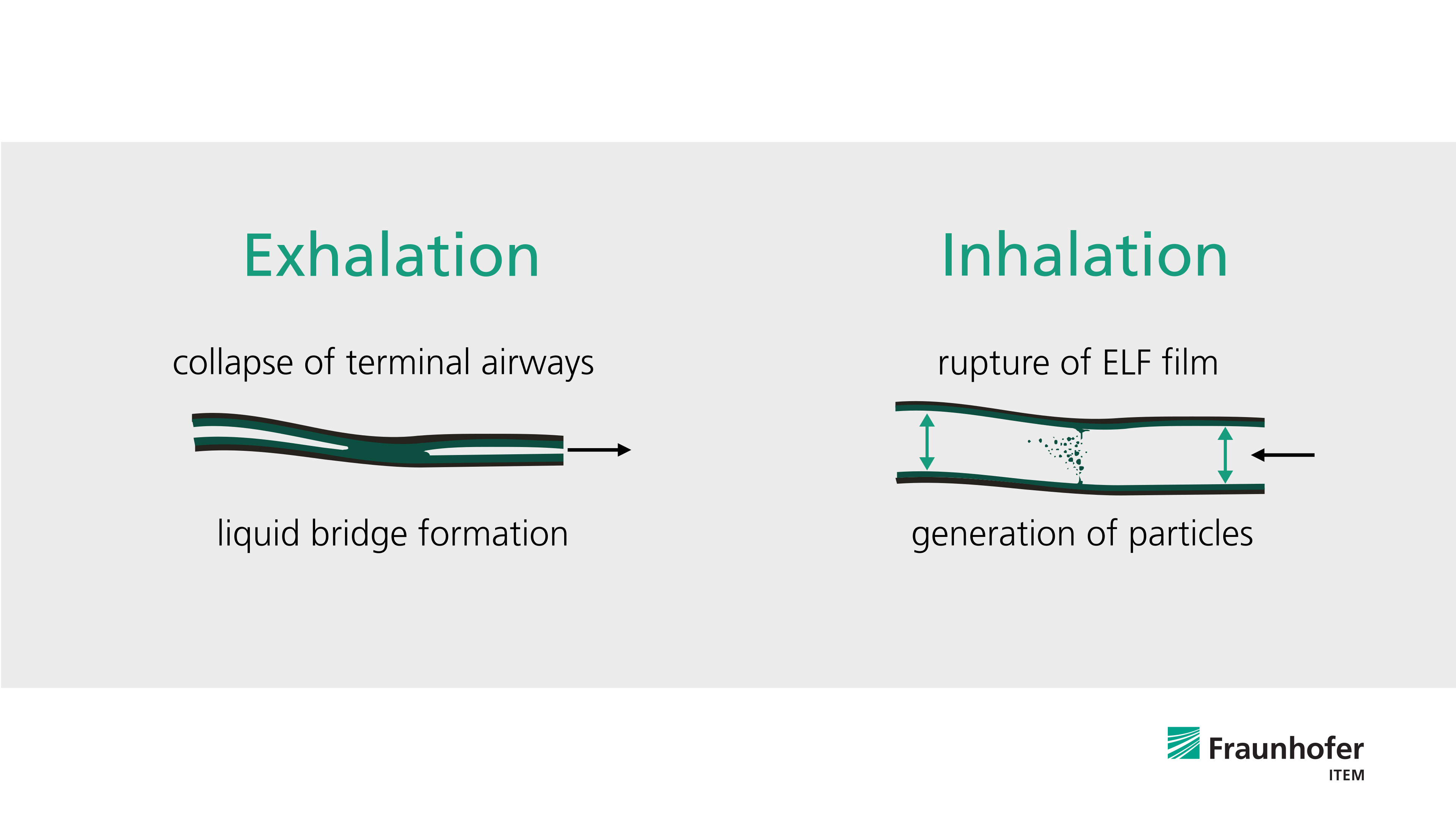The standard method to examine the lung and understand the complex processes taking place in this organ is by bronchoscopy. A method that is less stressful for patients would be beneficial under many aspects. In the alveolar lining fluid deep down in the lung, tiny particles are generated and exhaled with each breath – and these can be collected non-invasively. They are a rich source of information for elucidating pulmonary function, structure, and metabolic processes.
After exhaled particles have been collected and separated, they allow a fingerprint of the biochemical composition of the lung mucosal fluid to be generated, for example to monitor pulmonary drug levels. Exhaled particles also provide interesting physical information about the origin and location of an airway occlusion. Furthermore, comprehensive analysis of respiratory particle emissions can help determine the structure of the airways.
 Fraunhofer Institute for Toxicology and Experimental Medicine
Fraunhofer Institute for Toxicology and Experimental Medicine



